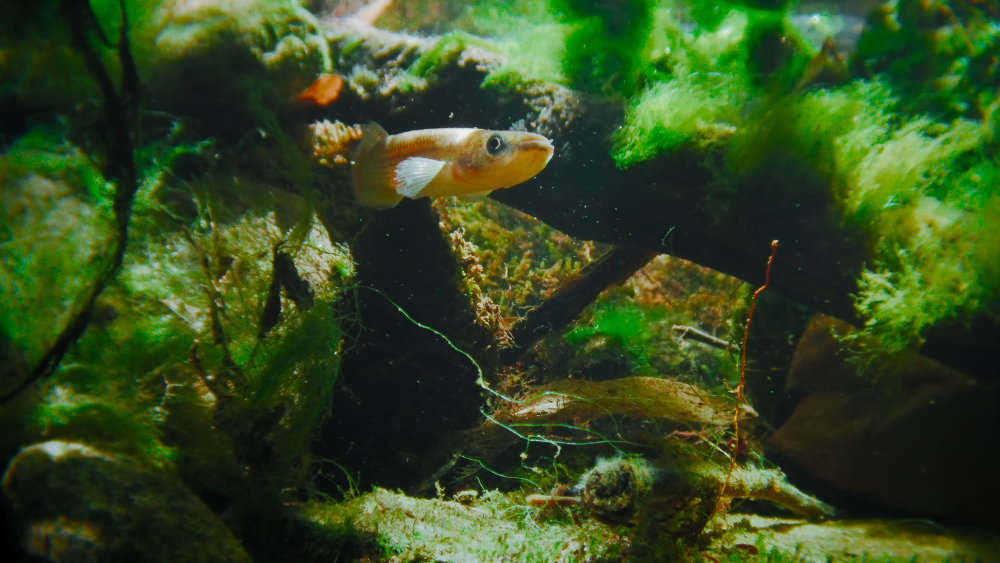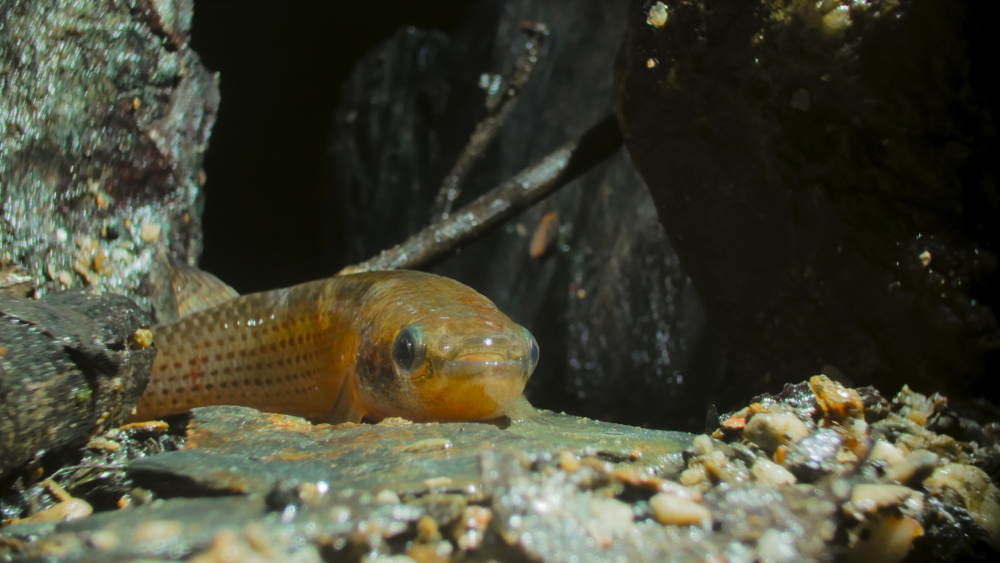In Trinidad, there’s a fish that can breathe through its tail. It’s a nifty trick, and one that comes in handy when it starts leaping around on land, marking one of nature’s most epic adventures that features in the new Apple TV+ series, The Secret Lives Of Animals.
Most killifish will hatch, live, and die in the same body of water – but, for some reason, a daring 10 percent will instead make like Bilbo and go on a great adventure. When competition for limited resources gets too much, or if a predator moves into town, some killifish decide to leap their way to greener pastures by traveling incredible distances on dry land.
The fish that move long distances tend to show bold tendencies
Dr Amy Deacon
The epic migration is facilitated by their tails, both in the physical leaping and in their ability to breathe. Gills don’t work out of water, which is why most fish die if left out in the air for too long, but not so for the killifish.
While on land, the killifish has evolved to be able to breathe through its tail as blood passes just close enough to the surface to pick up oxygen. It might not sound very comfortable, but it’s enough to keep these fish alive for up to 15 hours out of water. In that time, they can travel 6,000 times their own body length in search of water.
As for why some fish make the leap while others stay behind, no matter how cramped the conditions? We don’t yet know, but The University of The West Indies’ lecturer in Zoology Dr Amy Deacon (who helped out with the filming) has been studying the fish in Trinidad, where she’s noticed that some fish do naturally seem to be bolder than others.
Their tails are super thin, just a few cells thick
Dr Amy Deacon
“One of the things that we’ve shown is that the fish that move long distances tend to show bold tendencies if you have them in an aquarium and you do some kind of behavioral tests,” Deacon told IFLScience. “So they have certain behaviors that are repeatable and you can show that it’s almost like a ‘personality’ of that fish is to be bold. They seem to be the same individuals that then will travel the furthest distances.”
“That still doesn’t necessarily prove that [leaping likelihood is dictated] by genes over experience, but it just shows that consistency. That some individuals are just the ones that are bold and move, and then there are those that are shy and tend to stay in the same place.”

Killifish gills don’t work out of water, so they’ve evolved to be able to breathe through their tails as a backup.
Image courtesy of Apple TV+ / The Secret Life Of Animals
Getting to see this often-overlooked fish in action will no doubt be a first for many viewing The Secret Lives Of Animals – and despite working with the fish for so long, even Deacon got to see something during filming that she hadn’t before.
You could just see the red blood cells spinning around, racing around these capillaries
Dr Amy Deacon
“Their tails are super thin, just a few cells thick. When they’re out of the water, their tail will just be splayed out, and one of the cool things of being involved with the filming for the for the series was that we got a live fish and put its tail under the microscope.”
“You could just see the red blood cells spinning around, racing around these capillaries. The tail is so thin that even with an ordinary light microscope, you can see that, and it was really amazing to see. I never actually visualized that before. That means that there’s just a couple of cells separating the air from those capillaries, and so the oxygen is able to be absorbed and then they’ve also just got so many so dense with capillaries, that it’s just maximizing what it can do.”

You might assume a fish on land is in trouble, but for killifish it’s just another way to get around.
Image courtesy of Apple TV+ / The Secret Life Of Animals
Working with scientists like Deacon is what series producer Kevin Flowers said makes it possible to create series like The Secret Lives Of Animals, as “without the research, support, and expertise of people around the world, we can’t create what we put on screen.”
“We’re really lucky to work with some of the best scientists and experts around the world, and we’ve got a vast network of them,” added showrunner Matt Brandon. “We worked incredibly closely with them on the research and learning the stories, and then we continue that work in the field.”
“We’re very grateful and very reliant on scientists and experts to take us to the right places, to tell us when things might happen, to help us decide where the cameras might go. We also work with them throughout the editing and post-production process to ensure that all our facts are absolutely correct.”
Considering the series includes a spider in Peru that creates a giant self-portrait and uses its beating abdomen to trick would-be predators into thinking it’s real (a novel behavior making its debut in a documentary) and a caterpillar in North America that evades predation by dressing up like poop and snakes, you might find yourself asking: surely wild animals can’t be this clever, crafty, and bizarre? It’s safe to say that by the end of the series you’ll be convinced that yes, they really can.
The Secret Lives of Animals premieres December 18 on Apple TV+.
Source Link: Tail-Breathing Killifish Can Travel 6,000 Times Their Body Length On Land